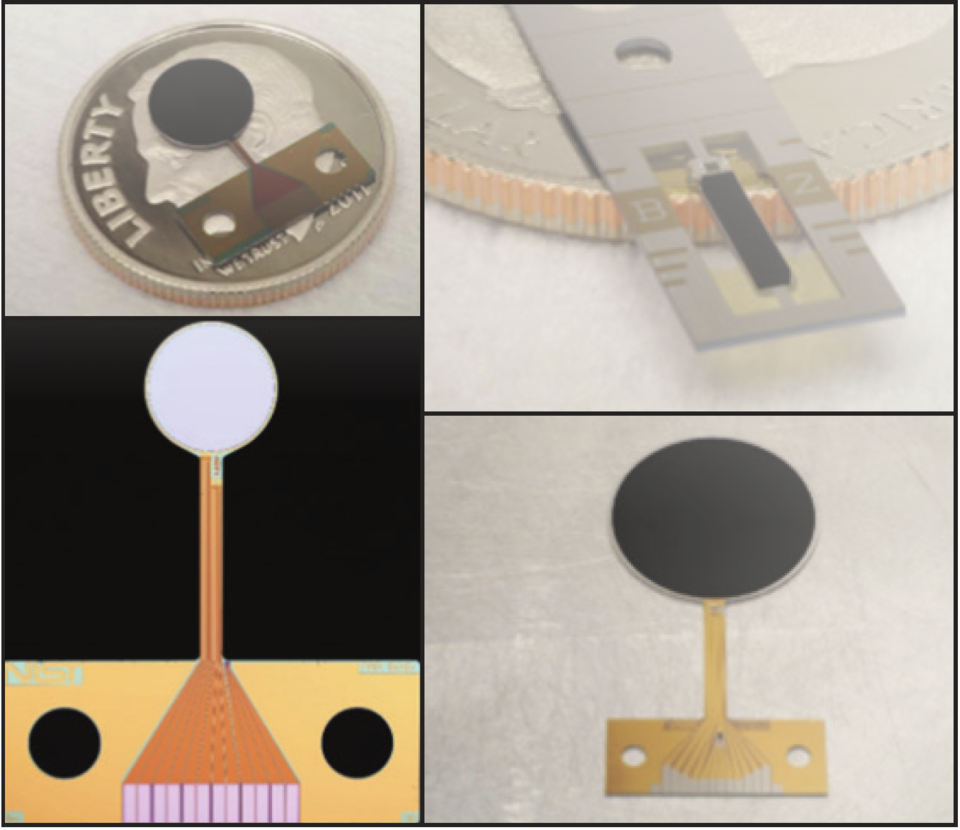Problem

Many ESRs can be bulky and are hand-assembled from individual components. Further, the time response of many ESRs is not optimal for detecting transient optical signatures. Moreover, some conical surfaces are not sensitive to low optical power or certain wavelengths.
Invention
This advanced radiometer is composed of a substrate, a radiation absorber placed on the substrate to absorb radiation, a thermal component placed on the substrate to change electrical resistance in response to a change in temperature of the radiometer, and a thermal link to connect the radiometer to a thermal reference. The NIST radiometer is designed to absorb approximately 100% incident optical power using vertically aligned carbon nanotubes - the ideal absorber - to accurately measure optical power.
Potential Commercial Applications
- Wide variety of usages, including optical power meters
- Useful in an imaging array, a broadband (multispectral) sensor, or a multi-element trap readiometer
- Is a thermal detector for optical radiation, including infrared radiation
- Can be electrically connected or optically connected to various devices
Competitive Advantage
Can give accurate measurements with the following benefits:
- Non-bulky and does not require many individual components to craft
- Is optimal for detecting transient optical signatures
- Is not limited to reading conical surfaces

